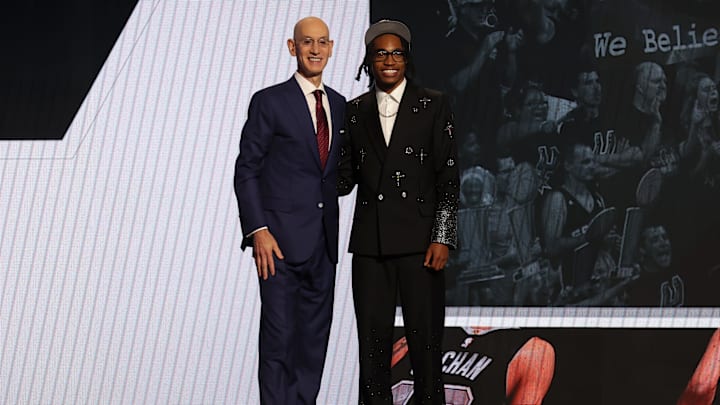The Minnesota Timberwolves made one of the biggest splashes on draft night by trading for Rob Dillingham, who was drafted eighth by the San Antonio Spurs. The Wolves sent a 2031 unprotected first-rounder and a 2030 first-round pick swap to acquire the former Kentucky Wildcat.
Minnesota only controls one first-round pick after the trade over the next seven years. Although the 2030s are in the not-so-distant future, the Wolves' brass has put all their eggs in one basket. The front office is betting on the current core to contend for the next half-decade.
The current iteration of the Timberwolves has already displayed the ability to contend. However, the squad will start a 37 and 33-year-old at point guard and center next season. Mike Conley Jr. and Rudy Gobert are valuable contributors, nevertheless, both players won't be around forever.
Dillingham's addition could be a risky strategy
Adding Dillingham is fantastic, but at what cost? Sure, he'll likely star as a sixth man before taking the starting point guard reigns from Conley Jr. once he's ready to call it quits. But he better turn out. If he doesn't, the Wolves will be without a floor general for years to come—and we saw what a huge difference Conley Jr. made once he was acquired.
Moreover, Dillingham isn't exactly a floor general. This past season, coming off the bench for the Wildcats, Dillingham averaged 3.9 assists per game. At this juncture, the 6-foot-1 guard is more of a sparkplug scorer than a lead ball handler. Don't get me wrong, his handle is electric, but his passing chops aren't quite there.
On a positive note, playing alongside Anthony Edwards won't force Dillingham to overextend his creation abilities. And perhaps even better, Dillingham will play behind one of the steadiest point guards in recent memory to begin his career.
If one thing's on the electric guard's side—it's time. However, the same cannot be said for the Timberwolves. Minnesota has a short contending window unless the franchise can attract top free-agent talent in years to come.
